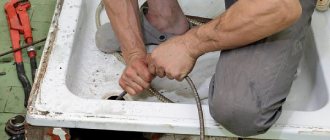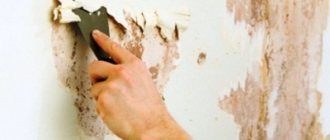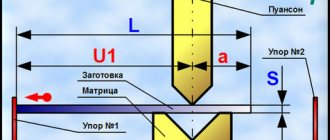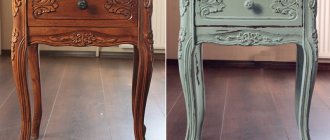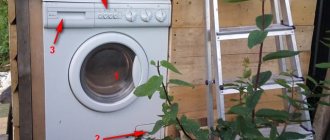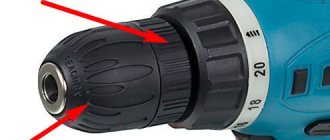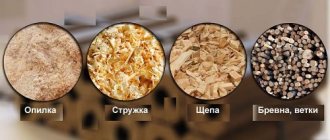Professional mounting foam TECHNONICOL 65 MAXIMUM all-season 1000 ml. Photo Petrovich
Polyurethane foam has many advantages and positive characteristics, which ensure its popularity. Properties are especially important when selecting and purchasing materials. But some parameters are necessary during the work process .
Assembly seams require final finishing. To do this you need to know how long it takes for polyurethane foam to dry?
Construction foam removal options
The problem is quite common, so various measures have been developed to eliminate contamination from polyurethane foam:
- special household cleaners: Russian Professional, Peno off, Purex and others;
- hard cleaning method using a knife, sandpaper or wire brush;
- folk remedies.
Important! To reduce the risk of damage to the surface being cleaned, it is necessary, first of all, to test the product on a small piece of coating.
If the color of the paint on the main surface has not changed, no streaks or thinning of the material have appeared, and no other negative changes have occurred, then the product is ready for use.
Cleaning after contact with clothing
If the builder was not wearing a protective suit when working with polyurethane foam, then it will not be difficult to ruin the work clothes. In addition, the sealant can get on your hair, hands, and shoes.
It is necessary to remove foam from clothes carefully, it is important not to spoil the color of the fabric or make a hole. If the stain is fresh, then it is removed using:
- byte spirit;
- gasoline (refined);
- nail polish remover (acetone-containing).
Important! Processing of clothing must begin from the wrong side of the material.
First of all, using scissors, we remove the growth from the foam, and then we process the blot from the inside of the fabric. Wipe the stain from the front side with a cotton pad or napkin. After completing the procedure, clothes must be washed in a standard cycle with washing powder.
Withered
When an old stain from construction foam is discovered on your favorite clothes, your first instinct is to throw the product away. There's no need to rush. Folk recipes and chemical industry products allow you to completely get rid of stains - it is important to choose the right cleaning product and technology.
Dimexide
An affordable product, sold in every pharmacy. The algorithm of actions is standard: tear off the growth, moisten the foam stain with Dimexide and leave for one hour. The treatment area is wiped with a damp cloth.
See also
15 ways to quickly unclog your sink
Solvents
The easiest way to remove foam residues is to use a solvent. It is important to remember that this product contains aggressive components that can damage delicate coatings, such as fabric and wood. The use of solvents must be treated with caution. Treatment begins with a test for the interaction of the solvent and the surface being cleaned.
Purex
A popular, proven product that can dissolve stains from construction foam. Available in paste form. Removes fresh stains 100% and actively fights hardened stains. Suitable for cleaning plastic and elements in a vertical position (does not drain), does not leave damage or scratches. Easy to use, the paste is applied to the blot and left on the surface for 30 minutes, then removed with a damp cloth along with the remaining foam.
Russian professional
A polyurethane foam cleaner that can remove fresh stains and old dirt. Used to clean the gun after use. An additional property is the removal of oil and paint stains.
Platina Cleaner
Effective in removing polyurethane-based construction foam. Able to clean the gun from hardened foam. The special valve fits most types of mounting guns.
PENO-OFF
European polyurethane foam cleaner. A powerful remedy. Precautions must be taken to avoid contact of the substance with third-party surfaces.
Refined gasoline
You can remove the stain using gasoline or kerosene. Cleaning a product with gasoline should begin with a test check of the effect of the substance on a soiled item. Apply 3 drops of purified gasoline to a small area. If no negative changes have occurred, cleaning can be continued.
Gasoline destroys the foam structure from the inside. 15-20 minutes after using the product, wipe the stain with a soft cloth. When working with gasoline, you must use gloves.
Aerosol
It is convenient to remove dirt using an aerosol. In this case, it is necessary to protect the respiratory system. Special foam cleaners are suitable for spraying. Homemade liquid remedies can also be used this way.
Low temperature
Frost has a detrimental effect on frozen foam. The molecules of the substance are held together, the growths can be broken off from hard types of surfaces. Stains are successfully removed from fabric using low temperatures: the clothes are placed in a bag and frozen, after a few hours the growth can be cleaned off with a knife, carefully without damaging the fabric.
sunlight
Polyurethane is destroyed when exposed to active sunlight. The soiled item is placed in direct sunlight for several hours. The sealant becomes softer and loses its adhesive properties. The build-up can be scrubbed off with a scraper.
Vegetable oil
Gentle removal of dirt. Suitable for removing stains from glass surfaces and other delicate surfaces. The oil is applied to the growth and left for half an hour. The adhesive properties of the sealant deteriorate; dirt can be removed with a soft cloth.
Fresh tracks
Uncured fresh foam is easy to remove. It is enough to use a cotton swab soaked in white spirit. Vinegar, oil, acetone will also cope with this task.
Acetone
Acetone is most effective when removing fresh stains. It will not help against dried stains. The substance is applied to the contamination with a napkin or cotton swab, and then removed with a cloth or sponge.
Dimexide
An effective remedy for old stains of polyurethane foam or superglue. First of all, it is necessary to check the resistance of the coating to Dimexide, and then begin cleaning. Most of the growth is cut off, treated with Dimexide, the remaining substance must be washed off. As a rule, the result is 100%. An ideal product for cleaning iron doors.
See also
How to clean an air conditioner with your own hands at home, the best products
Gun cleaner
I don't want to throw the gun away after use. It needs to be cleaned, and it is better to do this at a time when the sealant has not hardened. The easiest way is to use special cleaners for mounting guns. Cleaning with white spirit or another solvent is suitable. If the sealant in the gun has hardened, the tool will need to be disassembled.
From various surfaces
During construction and installation work, polyurethane foam can end up anywhere. To avoid getting the sealant on clothes, hands, or hair, it is recommended to use protective equipment.
Hands
Polyurethane is removed from hands with acetone or solvent. As a rule, the contamination is fresh and easy to clean. Working with gloves avoids the use of these products. After removing contaminants, hands should be washed with warm soapy water.
Textile
When working with fabric, it is important not to spoil or tear the product. The easiest way is to freeze the foam in the freezer or expose the stain to active sunlight. The adhesion properties of the foam to the fabric weaken, the sealant can be cleaned off. It is important to remember that you cannot simply wash foam from clothes.
Upholstered furniture and carpets
Dimexide and acetone. These products should be used with caution - they can corrode the color. Cleaning should begin with a test for the effect of active substances on the delicate coating. After cleaning, the carpet must be rinsed.
Glass
Fresh foam is removed with a regular solvent, hardened foam is removed with Dimexide. The growth is cleaned with a scraper or blade, and then Dimexide is applied. SOUDAL PU Pemovel is a special product that effectively removes polyurethane foam residues from glass.
Wooden doors
Doors made from natural materials must be cleaned with extreme care. When installing doors, polyurethane foam is used as a sealant; if handled carelessly, it often ends up in visible places on the product and significantly spoils the appearance.
Dimexide is able to cope with the problem and not damage the paintwork of the door. It is important to use gloves when working with the drug to avoid burning your hands.
Metal doors
When dealing with stains on metal doors, the algorithm of actions is standard: first, mechanical treatment and cleaning of the stain, then the use of a special solvent, Purex in the form of a paste or Dimexide is ideal.
Linoleum and laminate
During repairs or construction work, sealant often ends up on the floor. Linoleum and laminate suffer. It is difficult to wipe off a blot of sealant - the adhesion between these substances is great. You can find special cleaners in hardware or hardware stores. If the stain is fresh, then acetone or white spirit can remove the stain.
Plastic
When installing plastic windows, excess sealant often ends up on the window frames, which spoils the appearance of the window openings. If the sealant has not had time to dry and turn into stone, then folk remedies will come to the rescue: treating the stain with hot oil or vinegar. If the sealant has dried, it is necessary to use special solvents or Dimexide.
Wallpaper
Wallpaper is a delicate wall covering. The effect of most solvents is detrimental to wallpaper: the color is washed out and defects are formed in the texture. The best way to remove stains is mechanical cleaning. You need to wait until the sealant dries and scrape it off.
Tile
All types of solvents and Dimexide are suitable. First, the foam is scraped off with a scraper, and then a cleaner is applied. Rubbing the surface must be done carefully to avoid scratches.
Brick
It is useless to use solvents - the surface of the brick is rough; mechanical cleaning with a scraper or sandpaper is best.
See also
Popular models of machines for removing pills from clothes
What do you need to remember about the rules for working with foam?
When starting to perform certain operations with polyurethane foam, you should know certain nuances that will help you avoid foam getting on surrounding objects or allow you to remove it without problems.
- The work area - floors, furniture and other objects should be protected with film or newspapers.
When working with foam, it is recommended to protect your hands with gloves.
- Hands should be protected from foam getting on the skin with gloves.
- If you are performing a large-scale task, it is recommended to wear clothes that you don’t mind ruining. Well, or at least use a plastic apron, which you can then throw away without regret.
- Hair should also be protected with some kind of headdress, maybe even an improvised one - a scarf, Panama hat, bandana, etc.
- It is advisable to always have a polyurethane foam remover on hand. The faster you can use it, the better and more “painless” the cleaning of skin, clothing, and other surfaces will be. If the foam has time to set or be absorbed, then it will be much more difficult to clean it.
- If foam gets on any surface, you must try to remove it so that it does not smear. This can be done, for example, carefully with a narrow spatula. Then the remaining dirt must be immediately filled in or wiped with the selected cleaner. It is difficult, and sometimes even impossible, to remove foam that has been spread in a thin layer and has penetrated into the structure of another material.
It is best to remove foam from laminate immediately after contact.
- If the foam hits a surface that does not absorb moisture and other substances in one compact drop, then it would be better to wait for it to dry completely. Once the polyurethane foam expands, it can be easily cut or simply torn from concrete, polished surfaces, and even from some fabrics. However, this method is not suitable for laminate and linoleum, since the foam adheres to these materials very well and can damage the protective layer of the coating when it is torn off. Therefore, it is better to remove it immediately after contact.
- Do not try to wash your hands, tools or any surfaces contaminated by polyurethane foam in the usual way. The foam hardens quickly when exposed to water, and it will then be even more difficult to clean it off.
So, it is best to prevent foam from getting in at all. But, alas, it doesn’t always work out that way. Therefore, it is necessary to use compounds designed to remove foam and use proven methods for cleaning various surfaces from such contaminants.
How to clean a gun at home
The mounting gun must be cleaned immediately after use with any solvent or special cleaner for this type of construction product. If the sealant has hardened, the gun will need to be disassembled.
Cleaning the Main Valve
The used cylinder is disconnected from the gun. According to the instructions, unscrew all possible elements and clean them. As a rule, the main ball valve suffers the most from hardened foam. A sign of contamination is the inability to pull the trigger of the gun.
The main valve is located next to the cylinder clamp. It is filled with a special cleaner for mounting guns or Dimexide for 10 minutes. Then install a bottle filled with cleaner and rinse the gun.
Full
A full flush is performed when cleaning the main valve does not help and the gun still does not function. Algorithm of actions:
- the main ball valve must be unfastened by unscrewing it counterclockwise;
- the cleaner is poured inside the product and left for one hour;
- The liquid is drained and the valve is put in place.
If the sealant in the gun has hardened a long time ago, more than 7 days have passed, then most likely the tool will have to be thrown away - cleaning will not help.
Mechanical cleaning methods
If you don’t have a professional “tool” at hand, you can get rid of the foam on the gun using mechanical methods. But they are only suitable for external cleaning. Take a metal brush, knife or scraper. First, cut off the large dried pieces. Then scrape off the remaining areas with a sharp object. When finished, sand down with sandpaper.
Disassembling the gun for mechanical cleaning
It is inconvenient to clean the device using mechanical methods, so they are used in extreme cases. If there are large pieces of dried building material on the gun.
Precautionary measures
All types of chemical solvents are not good for human health. Contact of aggressive elements on the skin, hair, and eyes can cause health problems. Take precautions when working with caustic drugs.
Protective clothing
Overalls, gloves, cap, galoshes, headscarf or helmet are types of human protective equipment. The products help prevent toxic chemicals from coming into contact with exposed parts of the body.
When using foam during installation and construction work, a person’s clothing, hair, and shoes should be protected from unwanted contact with the installation substance.
Tool
All types of tools must be washed and cleaned immediately after work. This saves money on the purchase of solvents and allows you to keep the instrument in working condition.
Workplace organization
Order is the key to successful work. With rational organization of the workplace, fewer problems arise with equipment and tools. Material is selected in a timely manner and time for work is saved. Any builder should have several types of solvents in his arsenal, Dimexide and acetone.
The right technology
Working with the mounting gun should include:
- choosing foam suitable for the type of work and type of tool;
- use according to instructions;
- timely washing and drying of the gun.
The foam must not be allowed to harden in the gun; contaminants must be removed in a timely manner.
Characteristics and properties
Polyurethane compounds reliably adhere to various surfaces, i.e. have high adhesion . The main characteristics are also : output volume, foaming, primary and secondary expansion, viscosity. The main positive properties are ease of use, safety for human health, low thermal conductivity, and provides good sound insulation.
Axton professional mounting foam, 750 ml. Photo by Leroy Merlin
The main disadvantage is the lack of resistance to ultraviolet radiation . Therefore, the seams require additional processing: excess foam is first cut off and then covered with paint, putty, plaster or other finishing materials.
Main types of mounting material
All types of polyurethane foam are divided into several large groups.
According to the method of application, they are distinguished:
- Substance for professional use.
- Standard or semi-professional foam.
Foam for professional use is placed in a special construction gun equipped with a ring and a valve. Thanks to these parts, you can regulate the volume of the mixture coming out of the cylinder. The device allows you to place the composition in the most inaccessible places and provides savings in consumption. Typically, professional cylinders are presented in the form of 1000 ml containers and are designed for large volumes of work. The hardened foam has a homogeneous fine-cell structure, without re-expansion, or with very low, and also has a significant difference from household foam in the form of high density.
Varieties for domestic use are equipped with a special plastic tube and a lever that allows you to open the valve and release the mixture out. Usually the standard mixture is produced in smaller containers, has a more affordable price, and is easy to use. The main advantage of the standard sample is the ability to use unspent remains from the can within a month. This household type is more suitable for solving minor household and repair problems.
Depending on the time of year when the repair is carried out, the following types of polyurethane foam are distinguished:
- Summer - suitable for the range from + 5 to +35 °C.
- Winter - can withstand cold down to -18 °C, and can withstand positive temperatures up to +35 °C.
- Universal – suitable for use in the temperature range from -10 to +35 °C.
It is very important to know that the indicated temperature is relevant not for air, but for surfaces that will be worked with using polyurethane foam. Temperature will also affect the flow rate of the mixture. The lower this indicator is, the correspondingly less will be the yield of the mounting mixture, and vice versa.
The degree of flammability is another criterion for classification:
- B1 – fire-resistant material.
- B2 – self-extinguishing.
- B3 – flammable mixture.
Often, when choosing the right type of polyurethane foam, you should pay attention to the name of the manufacturer and country of origin.
Macroflex is a Finnish polyurethane foam that is one of the most effective and popular products. It is a universal find for beginners and professionals. Other quality brands include Polish Tytan, Estonian Penosil and Belgian Soudal.
On video: the difference between household and professional polyurethane foam
Main technical parameters
Manufacturers usually indicate most of the listed properties on the packaging of the building material. Some parameters of the building mixture make it possible to identify its quality.
Primary expansion
The expansion of the foam mixture during installation affects its filling properties, the reliability of the finished seam, its strength and elasticity. The foam changes its volume immediately after pressing the gun lever. That is, it will already lie in the cracks or on the surface of the material, undergoing primary expansion. The composition will increase its volume several times.
Secondary expansion and shrinkage
This parameter means a further increase in the volume of the mixture after the initial expansion until complete solidification, depending on the brand of product. This parameter may differ or vary between 15-100%. However, the lower this indicator, the better for the material. Because due to incorrect calculation of the amount of substance, structures such as wooden windows or PVC systems can easily be deformed and even broken.
Polymerization speed
If we take into account operating conditions with a temperature of 20 ° C and a humidity of 65%, the top layer dries out, on average, after 3 hours. That is, during this period of time the foam is already gaining its useful volume. After 4 hours, the frozen mixture can already be trimmed. For the sealant to completely harden, it should take up to one day. Plain water promotes rapid polymerization of the building mixture. After applying the substance, you can spray a small amount of liquid on it.
Adhesion
Adhesion is the ability of polyurethane foam to adhere to dissimilar surfaces. It easily adheres to any material, but will not be able to cope with silicone, ice, oil, Teflon, polypropylene and polyethylene. This is a list of the most obvious and not intended for gluing materials.
Heat resistance
There is class B3, where after hardening, curing and hardening, the polyurethane foam will perform its functions within the range from -40 to +90 °C. For short periods of time up to 130 °C.
Varieties marked B2 are non-flammable and self-extinguishing.
The purpose of class B1 is non-flammability of foam. Its fire resistance lasts up to 4 hours.
Fear of ultraviolet rays
The polyurethane foam base is endowed with the properties necessary for operation, but what it is not suitable for is exposure to UV. Under the influence of UV rays, the material begins to change color to a darker one and gradually lose strength and collapse. For protection, it is necessary to apply a layer of primer to prevent direct contact of the foam with the sun.
Expansion coefficient
When looking for a good installation sealant, you need to consider not only how long it takes to dry, but how much it expands. The consumption of material and the quality of foaming will depend on this indicator. Household foam can expand up to 60% in air. Professional sealants increase volume up to 300%.
The expansion coefficient depends not only on the composition. The increase in volume is affected by air temperature, humidity, and the rate of release of the initial composition from the cylinder. Even the method of foaming affects expansion: through a tube or a gun.
The volume of foam after expansion is written on each cylinder, but in reality this indicator does not match. The data is given for ideal conditions, which cannot be created at a construction site. The primary expansion immediately after exiting the balloon is considered primary. The polyurethane will further increase its volume up to 30% until the chemical reaction stops after 24 hours. However, during secondary expansion, shrinkage occurs, the rate of which for high-quality installation material does not exceed 5%.
Popular questions, is it possible...
Of increased interest is not only the rules and recommendations for the use of polyurethane foam, but also individual works. Internet users are interested in whether it is possible to use polyurethane compounds for the tasks presented below.
Professional mounting foam TYTAN 65 750ml. Stroylandia Photos
...foam the wiring
No. Electrical wiring regulations prohibit the use of foam. The grooves must be sealed with gypsum or cement-sand mortars.
...foam the socket
Can. There are no restrictions that would prohibit the installation of socket boxes on foam. The main thing is that the foam does not get on the contacts. It is also possible to foam the gaps in the places where the sockets are attached. To do this, you need to turn off the electricity, dismantle the socket, insulate the live wires, foam carefully and carefully, it is recommended to cover the foam with plaster, return the socket to its place, when the plaster has dried, turn on the electricity.
...foam the heating pipes
Not recommended. SNiP 41-01-2003. Heating, ventilation and air conditioning provided the following information on this issue: “Pipelines at the intersections of ceilings, internal walls and partitions should be laid in sleeves made of non-combustible materials; the edges of the sleeves must be flush with the surfaces of walls, partitions and ceilings. The sealing of gaps and holes in places where pipelines are laid should be provided with non-combustible materials, ensuring the rated fire resistance limit of the fences.”
Professional fireproof mounting foam KRAFTOOL Kraftflex Premium B1 750 ml. Stroylandia Photos
Those. the use of foam is undesirable. However, if it is still used, then it is necessary to choose options that are resistant to high temperatures.
...foam the bathhouse from the inside
Not recommended. Using polyurethane foam in a bathhouse is possible, but it is recommended to choose fire-resistant options, this is especially true for a steam room. However, you need to understand that foam is a synthetic material, the use of which in a room with natural, environmentally friendly logs or timber, boards and stone is not desirable, but possible. And the optimal solution is high-temperature sealants.
...foam the log house
Not recommended. Polyurethane foam can be used to foam joints in a log house only as a temporary measure. Since the use of polyurethane compounds:
- leads to a violation of the environmental friendliness of a wooden structure;
- moisture may accumulate at the junctions of foam and wood, which will lead to rotting;
- wood, unlike foam, is a breathable material;
- insufficient elasticity of the foam will lead to the formation of cracks;
- compositions with a large coefficient can lead to increased joints and gaps.
... insulate the walls
Can. Polyurethane foam has the necessary characteristics to solve this problem, but is not insulation. In addition, a wide selection of thermal insulation materials is available for sale. As a result, the consumer has the opportunity to choose an option with optimal properties.
...foam the sills in the car
It is possible, but the hygroscopicity of the foam (a significant part of the foam options absorbs and retains moisture) will lead to rotting of the thresholds.
